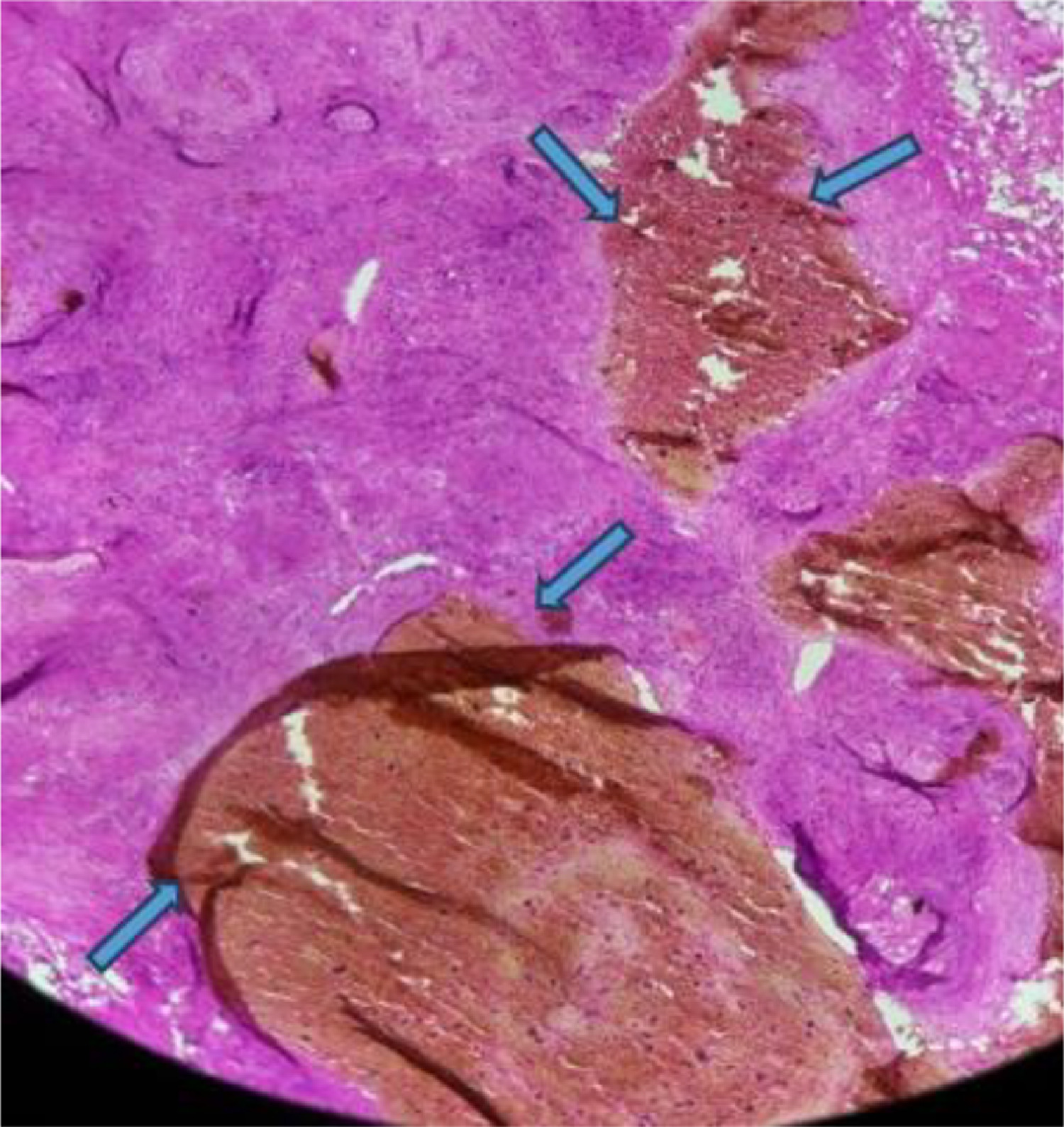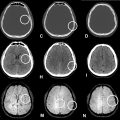Abstract
Intramuscular hemangiomas are rare benign vascular tumors, accounting for less than 1% of all hemangiomas. They often present with subtle symptoms that gradually worsen over time. Magnetic resonance imaging (MRI) is the gold standard for diagnosis, providing detailed lesion characterization. Surgical resection remains the preferred treatment. We report the case of a 66-year-old patient with a painful swelling in the calf that had progressively increased in size over ten years, originating from the flexor hallucis longus muscle.
Introduction
Intramuscular hemangiomas (IMHs) are benign vascular tumors that predominantly affect young adults, though they can also present in older individuals. IMHs represent approximately 0.8% of all hemangiomas and 7%-10% of benign soft tissue tumors. These lesions are classified into capillary, cavernous, and mixed subtypes, with the cavernous form being the most common in muscle tissue. Malignant transformation is exceedingly rare, with no reported cases of metastasis. The underlying pathophysiology involves aberrant endothelial cell proliferation and angiogenesis. Clinically, IMHs often present as painless, slow-growing masses; however, pain can develop depending on lesion size, location, and vascular engorgement. Magnetic resonance imaging (MRI) is the preferred modality for diagnosis. Management options include observation, sclerotherapy, embolization, and surgical excision, with complete resection being the most effective treatment. We report a rare case of an IMH within the flexor hallucis longus muscle in an elderly patient, emphasizing imaging findings and management strategies.
Case presentation
A 66-year-old Moroccan woman presented with a progressively enlarging mass in the lower third of her left leg over the past 10 years. The lesion had recently become painful and exhibited a bluish discoloration. She denied any history of trauma. She also reported intermittent discomfort exacerbated by prolonged standing and walking. Her medical history included well-controlled hypertension, managed with lisinopril (10 mg daily). She had no history of diabetes, peripheral vascular disease, or other systemic conditions. She had no known vascular malformations or similar soft tissue lesions. Surgical history was notable for a cholecystectomy performed 15 years earlier for gallstones, without complications. Her family history was unremarkable, with no reports of similar tumors or vascular disorders.
On physical examination, the mass was firm, nonmobile, and measured approximately 10 cm in its longest dimension. It was tender to palpation, particularly during knee movement and resisted extension. A bluish discoloration was noted on the overlying skin, and the mass exhibited partial compressibility with limb elevation, suggesting a vascular etiology. No signs of distal ischemia, neurological deficits, or pulsatility were detected. There were no signs of systemic illness or constitutional symptoms.
Laboratory tests were within normal limits, including complete blood count (Hemoglobin: 12.5 g/dL [normal: 12-16 g/dL], White Blood Cell Count: 6,200 cells/μL [normal: 4,000-11,000 cells/μL]), liver and kidney function tests, and inflammatory markers (CRP: 0.5 mg/L, ESR: 12 mm/h).
Ultrasound revealed an oval, macro-lobulated, hypoechoic intramuscular mass with echogenic trabeculae ( Fig. 1 ). MRI of the lower leg showed a well-defined, macro-lobulated intramuscular lesion within the flexor hallucis longus muscle. The lesion displayed low signal intensity on T1-weighted imaging, heterogeneous hyperintensity on T2-weighted sequences, and high signal on STIR sequences ( Fig. 2 ). Areas of internal calcification and regions of T1- and T2-hypointensity were noted ( Fig. 3 ). Following gadolinium administration, the mass demonstrated early and intense enhancement ( Fig. 4 ). The lesion was primarily vascularized by the peroneal artery, with no evidence of adjacent bone involvement.
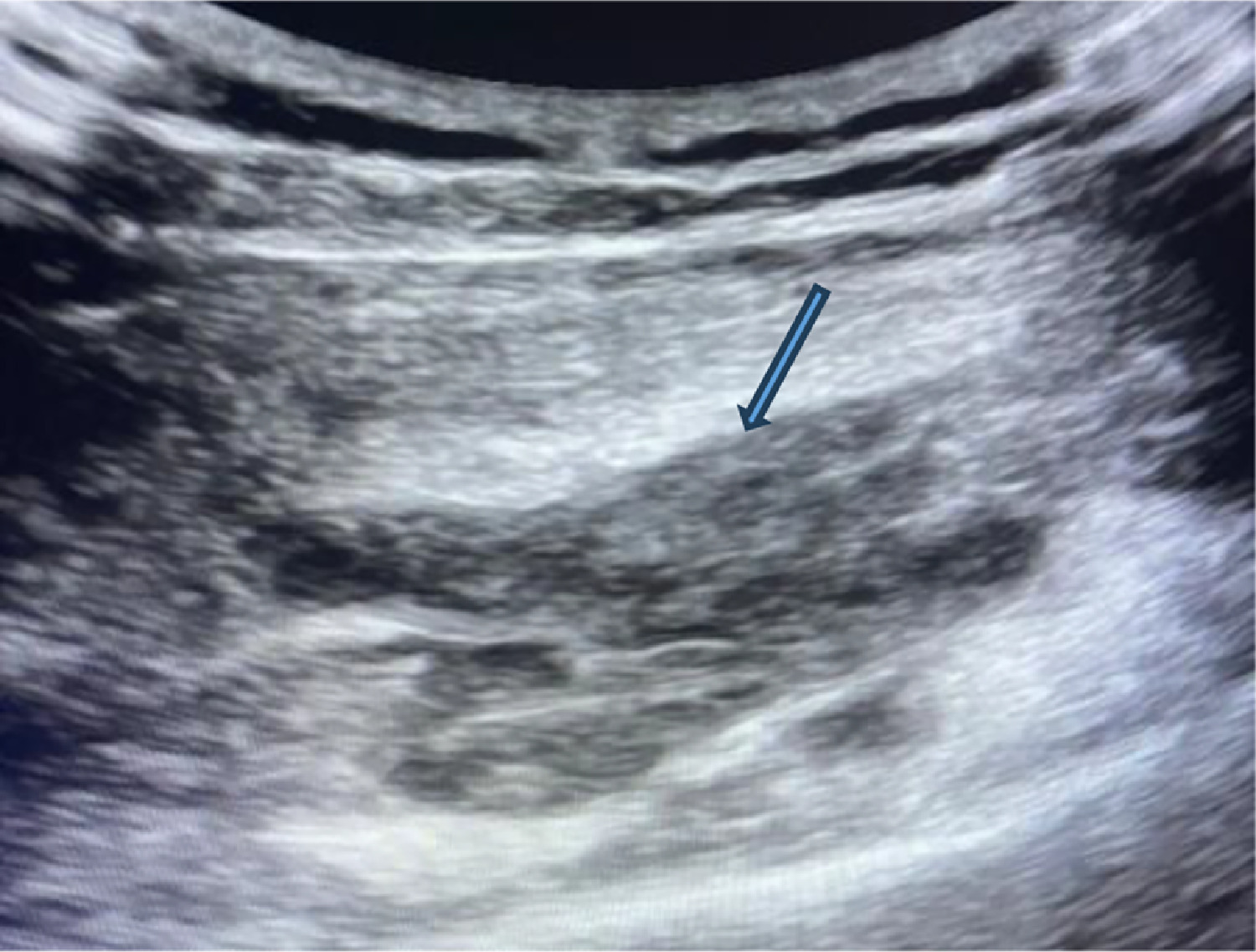
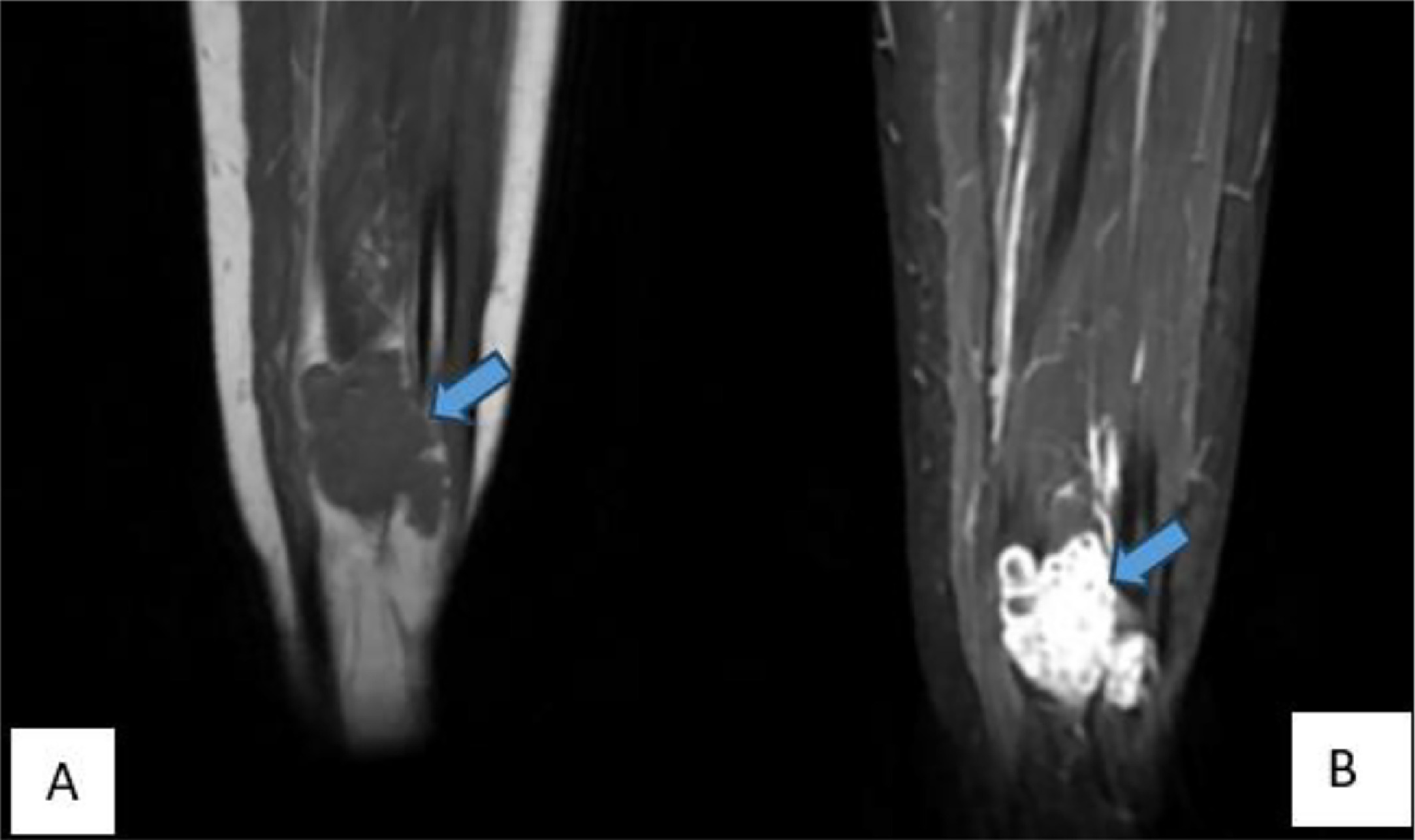
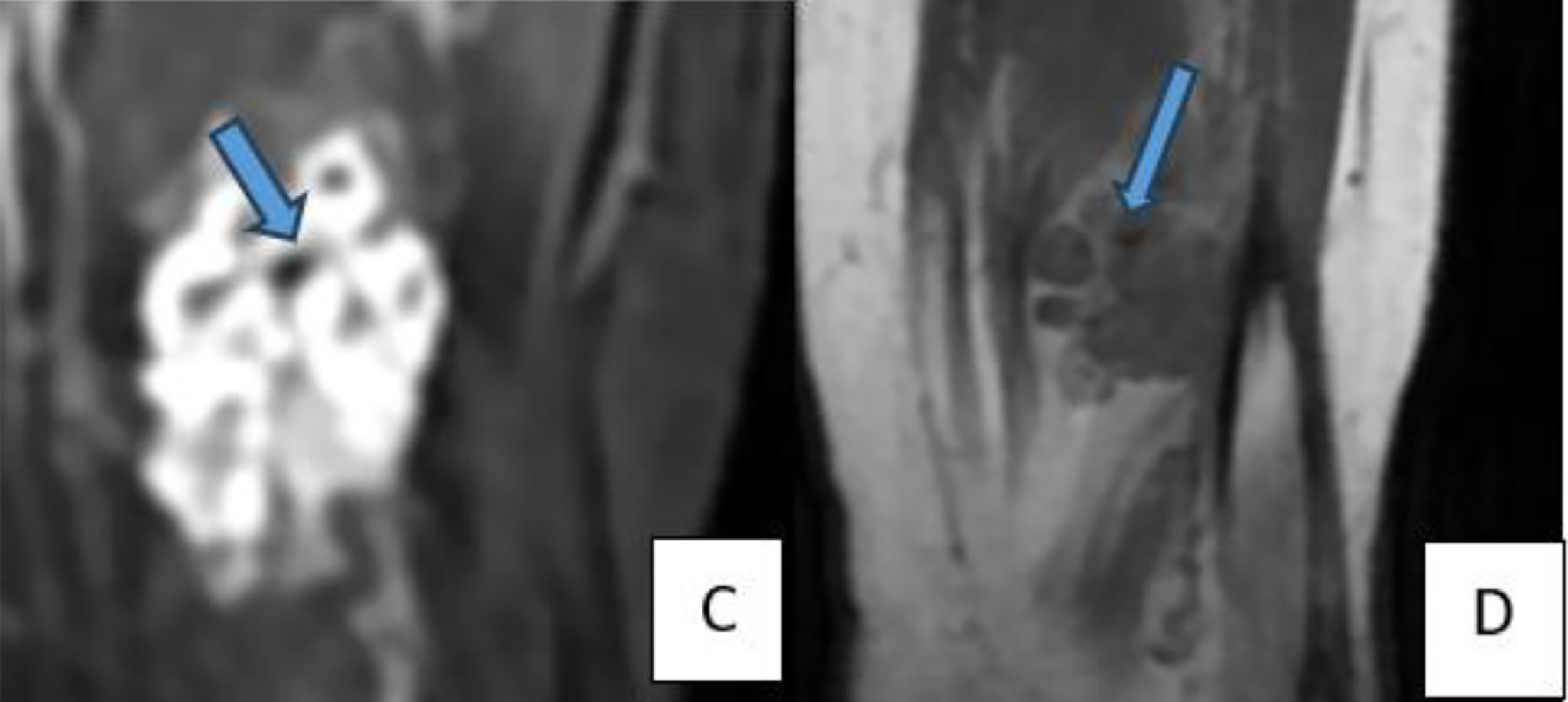
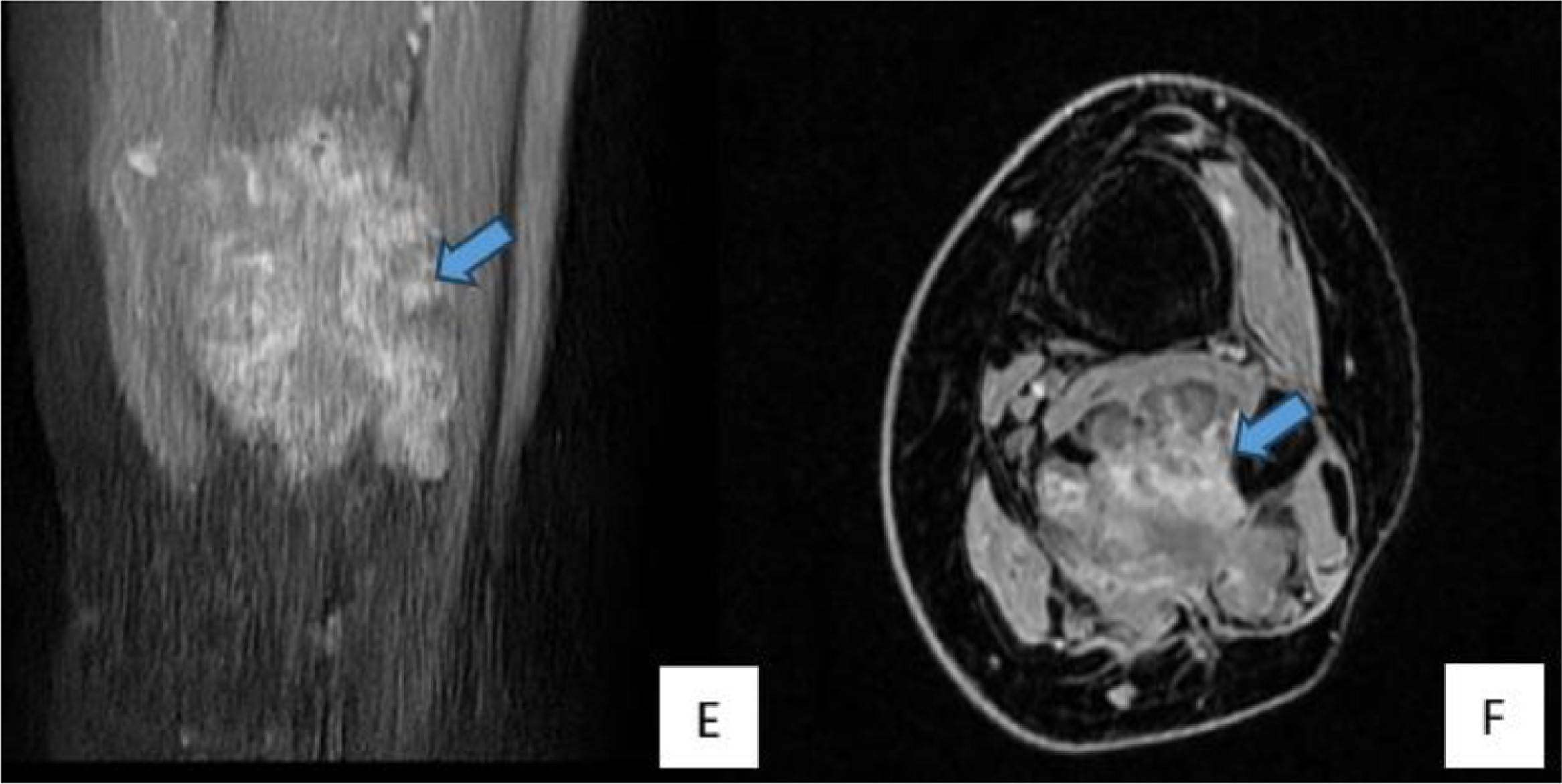
A percutaneous biopsy was performed for definitive diagnosis. Histopathological examination with hematoxylin and eosin (H&E) staining confirmed the presence of a benign vascular tumor. Immunohistochemical staining for CD31 and CD34 confirmed endothelial cell proliferation, further supporting the diagnosis of IMH. The lesion was composed of dilated vascular spaces lined by endothelial cells with eosinophilic cytoplasm and large, rounded nuclei. An inflammatory infiltrate with eosinophilic polymorphonuclear cells was also observed ( Fig. 5 ). The patient was admitted to the trauma department for surgical resection. Preoperative planning involved collaboration with orthopedic and vascular surgery teams to optimize surgical access while preserving critical structures. The tumor was excised without complications. Postoperatively, the patient recovered well, with no immediate complications. She was discharged after a few days and reported significant pain relief at her follow-up visit. Wound healing was uneventful, and no recurrence has been observed during subsequent follow-ups

